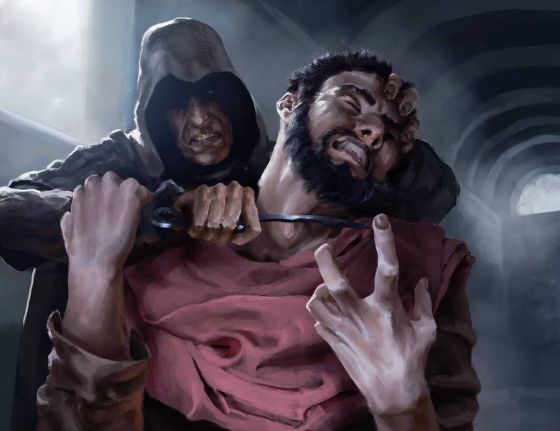Assassination (sage ability)
Assassination is an amateur-status sage ability in the study of Murder that functions as a form of attack in which the character is able to potentially dispatch the defender with little difficulty. In effect, a weapon is used to strike at a weak point in the victim, bringing about death.
The sage ability is, to a lesser degree, available to assassins who possess less than 10 points of knowledge in murder, on account of their class. In such cases, the practice is termed unskilled assassination, distinguishing it as less effective than attacks make with amateur or greater skill.
Description of the Act
The deed requires that the perpetrator be near enough to attack with a hand-to-hand attack. It is also necessary that the intended victim be surprised. The assassination need not be committed from behind, but this is often the case. Usually, to succeed, the assassin approaches the victim through the use of stealth.
If, following the stealth calculation, the assassin is adjacent to the intended victim and the victim is surprised, the assassin may at that time reveal their intention to assassinate. A die is rolled (see below) and the success of the assassination is determined. The victim cannot defend at all unless the assassination fails and then wins initiative. If the assassination fails, the assassin cannot make a second attempt, as the victim ceases to be surprised. The same rule denies an attempt to backstab.
Obviously, because an opponent in the midst of combat is not subject to the surprise rule, an assassination cannot take place during normal melee.
Note that if the intended victim that is more than three times the height of the perpetrator, or more than four times the perpetrator’s weight, the victim is too large to be assassinated.
Resolution
The perpetrator begins by rolling to hit in the normal fashion, under the usual conditions of combat. Any hand-to-hand weapon may be used.
If successful, rather than determining damage, the perpetrator and victim’s levels are compared using a roll of 2d4, rolled by the perpetrator. This result is modified by adding the assassin’s level, then subtracting 5 points. If the total is now equal to or greater than the victim’s total hit dice plus experience level, the victim is absolutely DEAD, reduced to minus 4 hit points for combatants without an experience level or -10 for those with an experience level.
An unskilled assassin uses the same method, adding but one-half of levels gained, discarding all fractions. For example, a third-level unskilled assassin would add only 1 pt. to the die, drastically reducing the chance of success even against lower level targets.
If the assassination fails, normal damage is rolled. If the intended victim survives, initiative is rolled.
See Also,
Assassin
Murder
Player Characters

